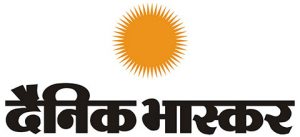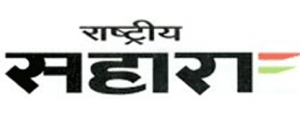
28-07-2017 (Important News Clippings)
To Download Click Here.
Harness private sector
Kant tells it like it is, government should stop operating infrastructure assets
TOI Editorials

Kant feels even if transport infrastructure is the most obvious segment where government should give up management responsibilities, this idea can be extended to other sectors such as schools. Education is the single most important investment a government can make to harness India’s demographic potential. The government’s performance in education sector has been dismal as it has not demonstrated the capacity to deliver. Therefore, it is time to experiment with concepts such as school vouchers and scholarships, or getting the private sector to run government schools while strictly monitoring outcomes, to provide children from economically deprived sections the opportunity to access quality education.India’s PPP experiment, as Kant points out, has not always fared well. PPPs are primarily contractual agreements between government and private parties, where the latter are expected to bring to the table managerial efficiency and high service standards. However, the devil lies in the details. This means incentives need to be properly aligned to rope in the private sector, contracts need to incorporate sufficient flexibility to accommodate changed economic conditions, and transparency maintained to curb corruption. With these tweaks, PPPs can be a game changer in India.
Personal bankruptcy
Pure pie in the sky
ET Editorials
The government is reportedly working on the rules for personal bankruptcy. This is ambition, indeed. Of course, there is nothing wrong with the concept. The problem is with the legal infrastructure India has in place: its size and capacity are puny in relation to the size of the population and the potential demand for bankruptcy proceedings.True, our financial laws have loopholes that some errant individuals exploit, but there could also be genuine reasons for bankruptcy such as an economic downturn leading to loss of employment. So, giving some flexibility to individuals to restructure their loans makes sense.
The code would replace two archaic laws: the Presidency Towns Insolvency Act, 1909 (for the three erstwhile presidencies of Chennai, Kolkata and Mumbai), and the Provincial Insolvency Act, 1920 (for all other areas). But they have seldom been used due to a dysfunctional judicial system (read: district and high courts).The debt recovery tribunal (DRT) is the adjudicating authority for individuals and unlimited liability partnership firms under the code. However, an individual can move the debt recovery appellate tribunal (DRAT) contesting the DRT’s order.
At present, there are only 38-odd DRTs and five DRATs functioning in India. Moreover, the DRTs’ track-record in dealing with the recovery of bad loans is poor, and adding insolvency suits would add to the pile of pending cases. The threshold for applicability of the code to individuals and partnerships, at Rs 1,000, is way too low. The need is to give DRTs more teeth to claw back dues. Setting up more benches, raising the remuneration for members of DRTs, making appeals costlier and limiting the number of appeals against rulings would help.The code allows individuals with small debts to declare insolvency through a fresh-start order. It is an amnesty, and akin to Chapter 7 of the US bankruptcy code where debts are wiped off forever, but only for people with incomes below the median. A resolution professional plays a role in this case as well. But the key is a combination of a functional judicial system and a healthy credit culture.
दो टाइम जोन से पूर्वोत्तर की पूरी क्षमता का उपयोग होगा
कुलदीप यादव,इंस्टीट्यूट ऑफ मैनेजमेंट स्टडीज एंड रिसर्च, एमडीयू कैम्पस, रोहतक

हमें समझना होगा कि हमारा शरीर घड़ी की सुइयों के अनुसार नहीं बल्कि सूरज के उगने व छिपने के अनुसार काम करता है, जो एक जैविक घटना है। इसीलिए पूर्वोत्तर के लोगों की शारीरिक क्षमता के पूर्ण उपयोग के लिए घड़ी की सुइयों में या फिर दफ्तर के समय में फेरबदल करना बहुत आवश्यक है। हम सब जानते हैं कि अरुणाचल प्रदेश में सूरज चार बजे ही निकल आता है। वहां के लोगों की दिनचर्या देखकर ऐसा प्रतीत होता है कि जैसे वे एक राष्ट्र की संकल्पना में भेदभावपूर्ण जीवन जीने को विवश है। हम ऐसा करके न केवल वहां के लोगों की प्रकृति के साथ खिलवाड़ कर रहे हैं बल्कि हम बेशकीमती ऊर्जा को भी बर्बाद कर रहे हैं। यह सही है कि अलग टाइम जोन लागू करने से बहुत-सी दिक्कतों का सामना करना पड़ेगा। अलग टाइम जोन से न केवल एअरलाइंस, शेयर मार्केट, रेलवे आदि बल्कि देश के अन्य भागों से यहां आने वाले लोगों को भी शुरुआती दिक्कतों का सामना करना पड़ सकता है लेकिन, इससे हम पूर्वोत्तर एक बेहतर आर्थिक विकास की नींव भी रखने में कामयाब होंगे। वैसे सरकार इसके लिए बीच का रास्ता भी निकाल सकती है। वह यह कि पूर्वोत्तर के दफ्तरों व बाजारों के समय को शेष देश की तुलना में एक या दो घंटे पहले कर दिया जाए। इससे वहां के लोगों की समस्या भी सुलझ जाएगी व बाकि सब भी ज्यों का त्यों बना रह सकेगा। हां, व्यावहारिक दिक्कतें इसमें भी आ सकती हैं, क्योंकि इससे वहां के सभी बैंक, स्कूल, कोर्ट और विधानसभा जैसी महत्वपूर्ण संस्थाओं को बाकि देश से पहले चलाना पड़ेगा। किंतु सरकार को सभी लोगों के हितों को देखते हुए जल्द ही कोई फैसला ले लेना चाहिए। अमेरिका जैसे देशों में कई टाइम जोन हैं तो हमें दो टाइम जोन अपनाने में दिक्कत नहीं होनी चाहिए।
सार्वजनिक सेवा के लिए निजी क्षेत्र की बैसाखी
कनिका दत्ता
जब 1990 के दशक की शुरुआत में नियंत्रित अर्थव्यवस्था का ढांचा तोड़ा जा रहा था तो आम धारणा यही थी कि सरकार और निजी क्षेत्र के बीच जिम्मेदारियां बांटने से देश को लाभ मिलेगा। सरकार कॉर्पोरेट गतिविधियों पर नजर रखने के काम से बच जाएगी और बेहतर स्वास्थ्य देखभाल, शिक्षा एवं आधारभूत ढांचे पर ध्यान केंद्रित कर पाएगी। भारतीय कारोबार जगत भी लाइसेंस राज की बंदिशों के चंगुल से आजाद होने के बाद अधिक नौकरियां पैदा करेगा और अधिक पूंजी का भी सृजन होगा। लेकिन आज सरकार और निजी क्षेत्र की भूमिकाएं अजीबोगरीब रूप से बदल गई हैं। सरकार कंपनी जगत के एक बड़े प्रवर्तक की तरह नजर आती है जबकि निजी क्षेत्र को लोक सेवाओं के निष्पादन की एक बैसाखी के तौर पर देखा जा रहा है। भले ही यह ढांचागत परियोजनाओं के लिए अपनाई गई सार्वजनिक-निजी भागीदारी (पीपीपी) की अब लगभग निष्क्रिय हो चुकी धारणा हो, कॉर्पोरेट क्षेत्र की सामाजिक जवाबदेही (सीएसआर) की सोच हो, शिक्षा का अधिकार कानून के तहत निजी क्षेत्र के स्कूलों में गरीब परिवारों के बच्चों को आरक्षण देना हो या हाल ही में नीति आयोग का ग्रामीण स्वास्थ्य देखभाल में निजी कंपनियों को जोडऩे के लिए पेश किया गया खाका हो, अभी तक सरकार का कार्यक्षेत्र माने जा रहे कार्यों में भी निजी भागीदारी लगातार बढ़ती जा रही है।
Time to change course
Chennai city will have no future if plans to fill the Ennore creek go ahead
Nityanand Jayaraman is a Chennai-based writer and social activist. T.M. Krishna is a Carnatic vocalist, author and public speaker
Since December 2015, Chennai has limped from one extreme weather-related shock to another — the floods, the failed monsoon of 2016, Cyclone Vardah, and now the water crisis. Chennai’s defining element is water. But the city shows scant regard for this precious but dangerous resource. Located squarely in the intervening floodplains of three rivers on a high-energy coastline, Chennai is a disaster-prone location. Any badly located city can be vulnerable merely by virtue of its location. But only a special kind of city — a city with a death wish — actively makes a bad situation worse.
Nothing speaks more elegantly to Chennai’s death wish than what governments are doing to the wetlands in North Chennai. In June, the State government conceded the Government of India-owned Kamarajar Port Ltd’s (KPL) request to divert 1,000 acres of the hydrologically sensitive Ennore wetlands for industrial installations that are best built on dry land. The proposal is pending Central government clearance. If permitted, KPL’s dream will turn out to be Chennai’s worst nightmare, far worse than the 2015 floods.
The importance of Ennore
Ennore Creek, a sprawling 8,000-acre tidal waterbody, is a place where climate change and disastrous land-use change converge. Two rivers with a total catchment of 5,000 sq km empty into the Ennore Creek.
This wetland’s importance may not be apparent. Much of the creek looks dry year-round, when visible waterspread is only 1,000 acres. But when cyclonic weather pushes the sea surging landwards, or when rainwaters from the two rivers come rushing to meet the sea, the waterspread in the creek swells to its majestic fullness. Come rain or storm surge, the availability of room for the rain or sea water to stay is what keeps the city from going under.The creek offers another protection too. It buffers the rich aquifers of the Araniyar-Kosasthalaiyar Basin from the sea, and keeps salt water from invading groundwater resources that supply several hundred million litres daily to Chennai even during the worst droughts.In 1996, the Tamil Nadu government protected a 6,500-acre stretch of the tidal waterbody under the Coastal Regulation Zone (CRZ) Notification. But greed prevailed over good sense. More than 1,000 acres of the creek were lost to illegal encroachments that rise like dams across a river.
The offending installations block the path of rainwaters rushing down the Arani river and the mighty Kosasthalaiyar. Areas that never got flooded saw waters enter homes and remain for more than a fortnight in 2015. Tamil Nadu’s lifeline, the Manali petroleum refinery, went under water for days.
Seeds of disaster
The identities of the architects of the last disaster may not be clear. Also, they may arguably not have known the consequences of interfering with mega-drains. But such assumptions no longer hold good. Political leaders and bureaucrats have been told that the creek is a protected waterbody, and that encroaching on it is both illegal and dangerous.
But neither impending danger nor illegality has stopped the State government from clearing KPL’s proposal to construct coal yards, warehouse zones, car parking and export terminals for Ford, Hyundai and Nissan on 1,000 acres of Ennore wetlands. Justifying the decision taken in June, the State Coastal Zone Management Authority published a new map — subsequently exposed to be a fraudulent map — that denied the existence of the 6,500-acre creek.The architects of future disasters in this case are neither anonymous, nor ignorant. They cleared KPL’s proposal fully aware that the encroachments will endanger more than a million people in Thiruvallur and Chennai districts.Such decisions arise not out of a love for encroachments, but out of perverted values, lack of accountability and an entrenched culture of discrimination. We refer to this in our collaboratively produced music video, the “Chennai Poromboke Paadal”, or the “Song for Chennai Commons”.
Picking on the poor
After every flood, courts and governments turn their ire against the poor who huddle in horrible hovels along the edges of our stinking rivers. The larger, more dangerous encroachments are never touched. The 2015 floods are being used to justify the removal of 55,000 families from the edges of Cooum and Adyar rivers to socially fraught and flood-prone ghettos in wetlands on the city’s fringes.The Cooum and the Adyar are elite, high-status rivers, running through elite neighbourhoods within the city. Purging the edges of the poor is seen as integral to the wholesome restoration of these rivers. Contrastingly, the Kosasthalaiyar and Ennore Creek are seen as working-class waterbodies. Here, the value of the “worthless” wetland is sought to be enhanced by industrial encroachers with state protection.Our song about Chennai spotlights the undervalued Ennore Creek, because with every cut to the creek, Chennai will hurt a hundred times. The song has resonated with fishers to whom the creek is life, and with lakhs more across the world. When, not if, Ennore floods this year or next, people will know it was not an accident.
If plans to fill the creek persist, Chennai will have no future. The precious freshwater aquifer that Chennai draws from will be lost to salt. The precious freshwater that falls from the sky will turn the city into a watery grave.
निजता की राजनीति
संपादकीय
सुप्रीम कोर्ट की नौ जजों वाली संविधान पीठ इन दिनों एक ऐसे मामले की सुनवाई कर रही है, जिसका वास्ता हम सब की निजी जिंदगी से है। निजता का अधिकार हमारा मूल अधिकार है या नहीं, इस पर अदालत जो भी फैसला करेगी, उसका असर हमारे सामाजिक जीवन पर भी दिखेगा और सरकार व प्रशासन से हमारे संबंधों पर भी। इस समय जब देश भर के विधि विशेषज्ञ, संविधान वेत्ता और नागरिक अधिकार संगठन पूरी कार्यवाही को दम साधे देख रहे हैं, इस मामले में एक दिलचस्प हस्तक्षेप हुआ है। देश के चार राज्यों- कर्नाटक, पश्चिम बंगाल, पुडुचेरी और पंजाब की सरकारों ने इस मामले में याचिका दायर करके मामले में हस्तक्षेप की इजाजत मांगी है। अदालत में इन राज्यों की नुमाइंदगी कर रहे वकील कपिल सिब्बल का कहना है कि निजता को मूल अधिकार माना जाना चाहिए। जबकि इस मामले में केंद्र सरकार शुरू से ही यह कह रही है कि हमारे संविधान ने हमें जो मूल अधिकार दिए हैं, उनमें निजता का अधिकार कहीं नहीं है। अभी तक यह मामला केंद्र सरकार बनाम नागरिक अधिकार का था। यह माना जा रहा था कि सरकारें अपनी प्रकृति से ही अनुदार होती हैं, इसलिए केंद्र सरकार के इस रुख पर आश्चर्य नहीं होना चाहिए। लेकिन अब चार राज्यों के हस्तक्षेप के बाद इसका स्वरूप बदल गया है।
मूल रूप से यह सारी बहस आधार नंबर को लेकर शुरू हुई है। कुछ नागरिक अधिकार कार्यकर्ताओं ने सुप्रीम कोर्ट में एक याचिका डालकर कहा है कि सरकार आधार परियोजना के लिए लोगों की उंगलियों के निशान और उनकी आंख की पुतली के बॉयोमेट्रिक्स जमा कर रही है, जो उनकी निजता का उल्लंघन है। इससे शुरू हुई बहस अब इस बिंदु पर पहंुच गई है कि निजता का अधिकार संविधान में दिए गए मौलिक अधिकारों के तहत आता है या नहीं? वैसे निजता के अधिकार पर इस समय भारत ही नहीं, पूरी दुनिया में बहस चल रही है। पश्चिमी देशों में निजता के अधिकार पर काफी काम हुआ है, साथ ही यह भी सच है कि दुनिया में कहीं भी नागरिकों को पूरी तरह से निजता का अधिकार नहीं मिला है। इस बीच विश्वव्यापी आतंकवाद के उभार ने इस पूरी बहस को काफी कुछ बदल दिया है। या दूसरे शब्दों में कहें, तो निजता के अधिकार के विस्तार को काफी हद तक रोक दिया है। यह भी कहा जाता है कि आतंकवाद ने सरकारों को एक और बहाना दे दिया है, जिससे वे निजता के अधिकार का रास्ता रोक सकें। आतंकवाद के खतरों से निपटने के लिए लोगों की ई-मेल पढ़नी पड़ती है, उनकी बातचीत सुननी पड़ती है, उनकी चैट पर नजर रखी जाती है, लेकिन इस सबसे निजता के अधिकार का उल्लंघन भी होता ही है। लेकिन भारत में जो बहस है, वह नौकरशाही और राजनीति में उलझ गई है।
बहस में चार राज्यों का हस्तक्षेप इसके राजनीतिकरण को ही दर्शाता है। जिन चार राज्यों ने हस्तक्षेप किया है, वहां एनडीए की विरोधी सरकारें हैं। इनमें से तीन प्रदेशों में तो कांग्रेस की ही सरकार है। कहना मुश्किल है कि केंद्र में अगर इस समय कांग्रेस की सरकार होती, तो इस मसले पर उसका रुख क्या होता? आधार परियोजना का पूरी तरह विरोध करने वाले जब सत्ता में आए, तो उनका रुख कैसे बदला, यह हम देख ही चुके हैं। अगर यह मामला सिर्फ नागरिक अधिकार संगठन बनाम सरकार का होता, तो आशंका शायद इतनी नहीं होती। दलगत राजनीति घुस आने से डर यह है कि मामला राजनीतिक जिद का रूप भी ले सकता है। लेकिन, राजनीति भले ही जैसी भी हो, फिलहाल हमें यही उम्मीद करनी चाहिए कि सुप्रीम कोर्ट फैसला करते हुए नागरिकों के हितों का पूरा ध्यान रखेगी।
‘‘टाइम जोन’ पर सियासी पैतरा
शैलेंद्र चौहान
बीजू जनता दल (बीजेडी) के सांसद भर्तृहरि महताब ने लोक सभा में मुद्दा उठाया कि देश के पूर्वी और पश्चिमी छोर के समय में लगभग दो घंटे का अंतर है। ऐसे में अलग ‘‘टाइम जोन’ होने की स्थिति में मानव श्रम के साथ अरबों यूनिट बिजली भी बचाई जा सकती है। जब देश के बाकी हिस्सों में साल के सबसे लंबे दिन का सूरज उगता है, तब यहां के उत्तर-पूर्वी हिस्से का काफी दिन गुजर चुका होता है। देश के इस हिस्से में सूरज काफी जल्दी उग आता है, लेकिन इनकी दिनर्चया देश के बाकी हिस्से की तरह ही चलती है यानी दफ्तर 10 बजे ही खुलते हैं, स्कूल 8 बजे ही खुलते हैं। फर्क सिर्फ इतना है कि दिल्ली में रहने वाला व्यक्ति तरोताजा होकर ऑफिस पहुंचता है, वहीं उत्तर-पूर्वी राज्य वालों का दिन दफ्तर पहुंचने तक काफी कुछ गुजर चुका होता है।संसदीय मामलों के मंत्री अनंत कुमार का कहना था कि यह मुद्दा बेहद अहम और संवेदनशील है और सरकार इस मुद्दे पर गंभीरता से विचार कर रही है। असल में यह ‘‘टाइम जोन’ है क्या ?18 वीं सदी से पहले दुनिया भर में सूर्य घड़ी से समय देखा और मिलाया जाता था, लेकिन सर सैंडफोर्ड फ्लेमिंग ने 1884 में टाइम जोन का सिद्धांत विकसित किया, जिससे दुनिया भर के समय को सही दिशा मिली। टाइम जोन या मानक समय इसे आप क्षेत्रीय समय के नाम से भी जानते हैं। यह 1884 में 13 अक्टूबर के ही दिन ‘‘ग्रीनिवच मीन टाइम’ तय किया गया था और दुनिया भर की घड़ियों का समय इसी टाइम जोन से तय किया जाता है लेकिन क्या आप जानते हैं कि आखिर इस टाइम जोन को निर्धारित करने की क्या जरूरत है? असल में जब सूर्य उदय होता है तो एक समय में पृवी के किस एक ही हिस्से में रह सकता है। इस प्रकार पृवी किसी हिस्से में सूर्य की तिरछी किरणों पड़ती हैं तो कहीं सीधी किरणों। इसीलिए जब किसी स्थान में दोपहर का समय होता है किसी स्थान में शाम का और किसी में रात का समय भी हो सकता है। अगर पूरी दुनिया की घड़ियां एक साथ मिला दी जाएं तो बहुत बड़ी गड़बड़ी हो जाएगी। जैसे किसी के यहां 5 बजे सुबह होगी तो किसी के यहां 5 बजे दोपहर तो किसी के यहां 5 शाम। इस समस्या को हल करने के लिए समय देशांश रेखाओं के आधार पर क्षेत्रीय समय को बनाया गया। पूरी दुनिया के नक्शे को देशांश रेखाओं के आधार पर प्रत्येक 15 अंश के अंतर पर 24 बराबर बराबर के काल्पनिक हिस्सों में बांट दिया गया है और इसकी शुरु आत (0 अंश) से होती है। यह 0 अंश वाली रेखा इंग्लैंड के ग्रीनविच में स्थित वेधशाला से शुरू होती है, समय की गणना यहीं आरंभ होती है। इसे अंतरराष्ट्रीय मानक समय (ग्रीनविच मीन टाइम) के नाम से जाना जाता है। ग्रीनविच रेखा से दाहिनी ओर वाले देशों का समय आगे होता है और ग्रीनविच रेखा से बाई ओर वाले देशों का समय पीछे होता है। इसी प्रकार हर देश का अपना मानक समय है। भारत में यह रेखा इलाहाबाद के निकट नैनी से गुजरती है। यहीं से देश का राष्ट्रीय मानक समय माना जाता है। पूर्वोत्तर भारत के कई संगठन समय-समय पर इलाके के लिए अलग टाइम जोन की मांग उठाते रहे हैं। अब पहली बार केंद्र सरकार ने इस मसले पर गंभीरता से विचार शुरू किया है। देश के पूर्वी और पश्चिमी छोर के बीच समय में दो घंटे का अंतर रहता है। केंद्रीय विज्ञान व तकनीक मंत्रालय ने इसका पता लगाने के लिए एक अध्ययन किया था कि दो अलग-अलग टाइम जोन होने की स्थिति में कितनी ऊर्जा बचाई जा सकती है। ब्रिटिश शासनकाल के दौरान देश में तीन अलग-अलग टाइम जोन थे। बांबे टाइम जोन, कलकत्ता टाइम जोन और बागान टाइम जोन। पूरे देश के चाय बागान मजदूर इसी बागान टाइम जोन के हिसाब से काम करते थे। असम के चाय बागानों में यह टाइम जोन अब भी लागू है। पूर्वोत्तर में लंबे अरसे से अलग टाइम जोन की मांग करने वाले संगठनों की दलील है कि अगर इलाके में घड़ी की सुइयों को महज आधे घंटे पहले कर दिया जाए तो 2.7 अरब यूनिट बिजली बचाई जा सकती है। केंद्रीय विज्ञान व तकनीक मंत्रालय ने कोई एक दशक पहले इस मुद्दे के अध्ययन के लिए एक समिति का गठन किया था। तब देश में दो अलग-अलग टाइम जोन के विकल्प पर गंभीरता से विचार-विमर्श किया गया था। इनको ग्रीनविच मीन टाइम (जीएमटी) से क्रमश: पांच व छह घंटे आगे होना था। कुछ लोगों का यह भी मानना है कि यह एक नए अलगाववाद आंदोलन की शुरुआत है। लेकिन भारत ने अब तक बहुत विकास किया है और हम अब वैसे समाज में नहीं रह रहे हैं।





